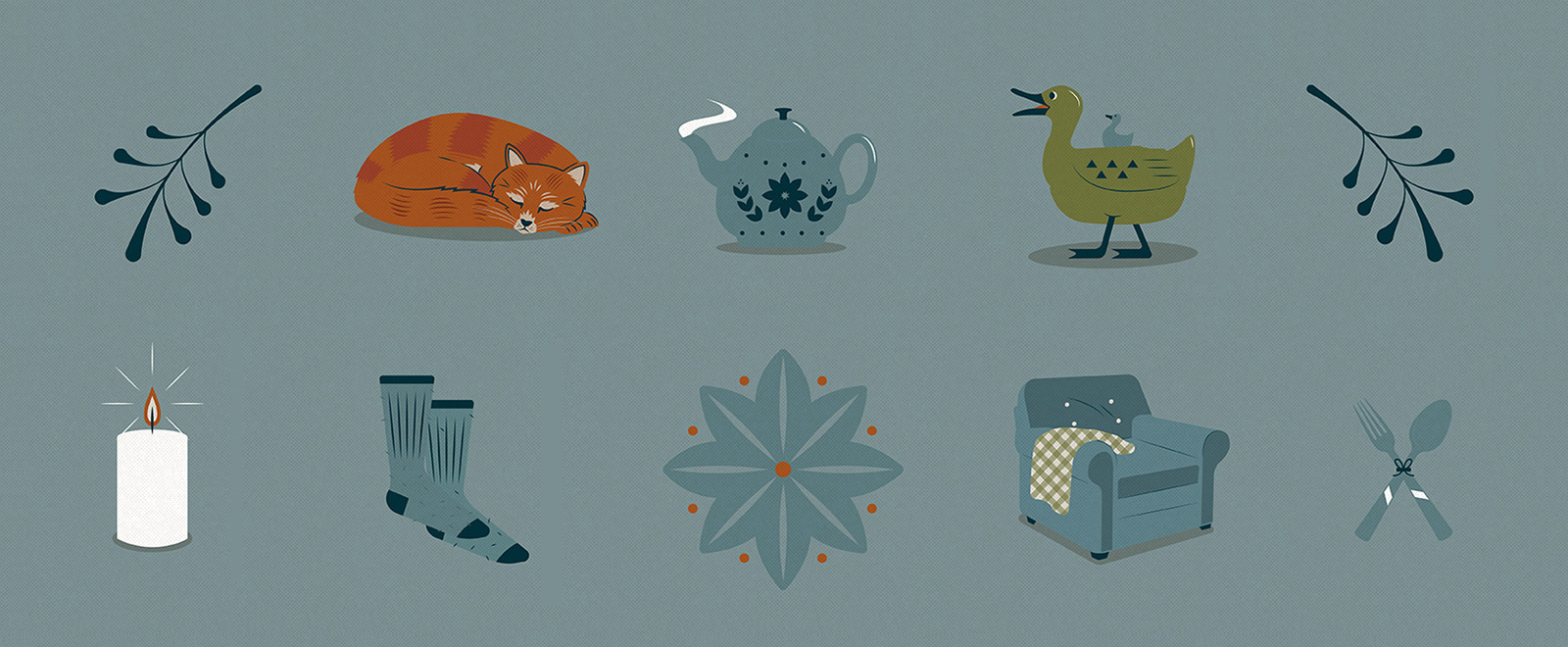
Hygge for Happiness
The UW’s Claus Andersen explains Denmark’s cozy concept.
 nce the days start to shorten, it happens again, sure as the solstice and nearly as regular: Claus Elholm Andersen begins receiving requests to explain the Danish concept of hygge to Americans.
nce the days start to shorten, it happens again, sure as the solstice and nearly as regular: Claus Elholm Andersen begins receiving requests to explain the Danish concept of hygge to Americans.
Hygge (pronounced HOOG-uh, with the y sounding like the oo in “good”) is a Danish concept that implies warmth, simplicity, and comfort. In the 21st century, as digital media have become more invasive, hygge has grown increasingly popular in America. Andersen, an associate professor in the UW’s 150-year-old Scandinavian studies department, is an expert on Danish culture — he grew up in Denmark and studied at the University of Copenhagen. He’s been on the UW faculty since 2017, and hygge has become something of a cottage industry for him, though he’d like you to know that its appeal stretches beyond cottages — in fact, beyond all the stereotypical hearth-and-home trappings of tradition that style magazines and websites promote.
Andersen frequently speaks about hygge to alumni audiences, as well as at Badger Talks programs and Wisconsin Public Radio’s University of the Air. “I’m probably asked to do five or six of these talks a year,” he says, “and then often on the media, [with] radio and TV interviews asking me to give the 30-second version of hygge.”
Hygge is popular in wintertime because of its associations with comfort and family — with warm sweaters and crackling fires. But this is an oversimplification.
“You hear that the concept is untranslatable,” he says. “But it’s essentially the art of creating coziness, familiarity, friendliness.” It’s an experience that people can create anywhere, anytime. If you want to incorporate a little hygge into your life, here are Andersen’s tips, in his own words.
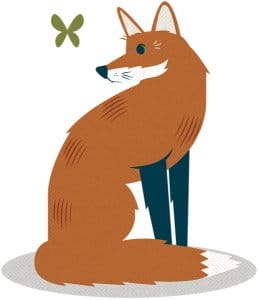
Hygge Is Social
My definition of hygge is “pleasant togetherness.” Pleasant is about atmosphere. Togetherness is about being social. In the pleasant column would be things like candlelight. It would be things like indirect lighting in your house. It would be, maybe, a fireplace, relaxed clothing. On the social side it would be intimacy with friends and family.

Hygge Is Intentional
In Denmark, what is very important is the word itself. And the word hygge exists as a verb, “to hygge”; a noun; and an adjective, hyggelig. Part of doing hygge is using the word. The word kind of becomes a speech act. You’re sitting in an environment with friends, and then you say, “This is hygge.”
In our home, we have a tradition called eftermiddagsmad, an afternoon snack. And literally, it is hygge. At one point in the afternoon, we sit down together. We have a cookie, or we might have pumpkin pie. My wife and I have coffee. It might last anywhere from two to 10 minutes, but we sit down. We take a breather. We spend time together.
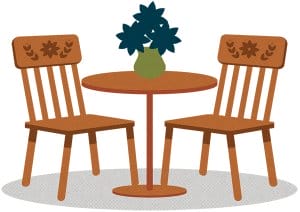
Hygge Is Egalitarian
Hygge is also used as a way of social control to create egalitarianism. If someone has a lot of money and builds a house that’s too big, the worst thing you can say is that it is not hygge.
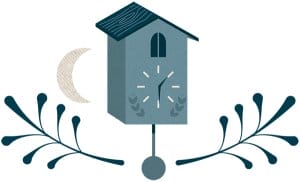
Hygge Can Be Anytime
One misunderstanding is that you can only be hygge in the wintertime. Hygge is an important component in the winter months, but hygge is something that you do all year round. It’s also on a long summer evening, where it’s light until midnight and you are sitting outside and cozying up. It doesn’t have to be indoors.
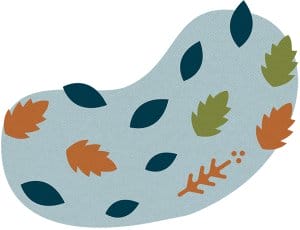
Hygge Evolves
Most people think of hygge as a constant concept, but if you look at it historically, it changes with the times. If you had gone to Denmark a decade ago and said, “Let’s do hygge with the electric candles,” people would have laughed at you. But there has actually been a shift in Denmark. People buy fewer real candles and more electric candles. Half a generation ago, the typical Danish house would have been mid- century architecture. Now it’s clean, sharp corners, everything white or black — not at all soft. I think this shows the flexibility of hygge. Most people think it can’t be changed, but each generation uses it in a new way.
John Allen, the associate publisher of On Wisconsin, is still trying to make his mouth pronounce hygge.
Published in the Winter 2025 issue
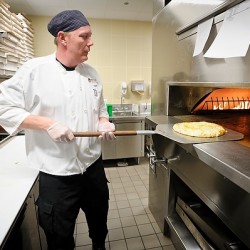


Comments
No comments posted yet.